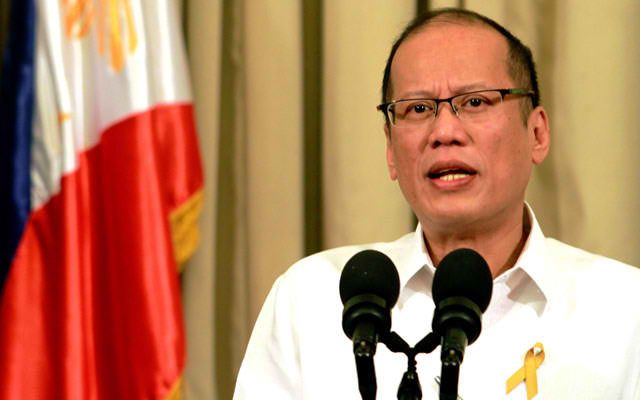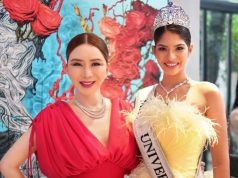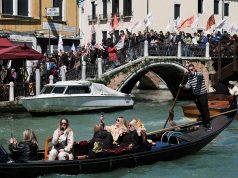I am not surprised that a case has been filed against former President Benigno Aquino, not because it is an easy case for indictment, but because the trend since former President Ferdinand Marcos has been to file cases against a former president after his/her term. Thus, President Marcos was indicted for his grand larceny and gross human rights violations, President Corazon Aquino for the “Mendiola massacre”, President Fidel Ramos for the P7.3-billion Centennial Expo Project in Angeles City, President Joseph Estrada and President Gloria-Macapagal Arroyo for plunder and now President Benigno Aquino for the Mamasapano incident.
Some cases were meritorious and some not. Former Ferdinand Marcos’ cases are justified. Even now the government is still litigating to get back millions of dollars looted from the treasury. The legislative directive for compensation to all human rights victims during the Marcos regime is proof of its evils. President Corazon Aquino’s case was dismissed before it proceeded to trial. President Ramos was cleared. President Erap Estrada was convicted of massive plunder but was granted absolute pardon by President Gloria Macapagal-Arroyo. And the latter was acquitted.
The trend also is that no President was ever incarcerated – in jail, that is, though President Estrada spent years detained in a comfortable resthouse in Tanay; and President Arroyo, in “hospital arrest” at the Veterans Memorial Medical Center. Will President Aquino’s case follow the same route, i.e., no jail?
My initial reaction is it will.
President Aquino was indicted for “Usurpation of Authority” under Article 177 of the Revised Penal Code. This is committed by “any person who shall knowingly and falsely represent himself to be an officer, agent or representative of any department or agency of the Philippine Government”… and “shall perform any act pertaining to any person in authority or public officer of the Philippine Government … without being lawfully entitled to do so.”
President Benigno Aquino cannot be the main person for this charge. Clearly, he did not “knowingly or falsely represent himself” as an officer of the government. He was the President of the Philippines. Neither did he act “without being lawfully entitled to do so.” As President, he was the chief executive of the government.
So, for former President Benigno Aquino to be incriminated in the crime, the only way is to theorize that he conspired with the main person charged with usurpation. In conspiracy, the “act of one is the act of all.” For it to exist, however, there must be proof of a previous or contemporaneous agreement to commit a crime punishable under the Revised Penal Code (RPC). Was there such a concerted design?
Conspiracy notwithstanding, in the RPC, criminal intent or mens rea is necessary to indict and ultimately to convict. RPC crimes are mala in se, meaning criminal intent is a pre-requisite to qualify an act as a felonious one. Even in conspiracy, all parties to the agreement must be proven to have a common mens rea.
Failing to prove malice or an evil design attributable to the act charged, a criminal case for such act must be dismissed. Thus, in Bagajo vs. Marave where a teacher disciplined an incorrigible student by spanking her resulting in wounds on her legs, the Supreme Court absolved the teacher of the crime of physical injuries because the teacher had no evil intent. The purpose was to discipline the student albeit in the wrong way.
In the context of the Masasapano incident, even if President Aquino committed a misstep in meeting with the suspended Purisima, his aim was apparently to remedy or salvage whatever was happening in Masasapano. He must have been pre-occupied with that intention. He asked questions, sought answers, advice and guidance. To attribute a sinister or evil design to such acts is just too tenuous. There can be no mens rea. Actus non facit reum, nisi mens sit rea (An act does not make a person guilty, unless his mind is guilty). There is no crime when there is no criminal mind.
Likewise, he cannot be guilty of reckless imprudence or negligence resulting in “usurpation of authority”. Reckless imprudence or negligence, which is an omission, and usurpation, which is a willful conduct, are oxymoron and therefore cannot co-exist. And even if they can, there can be no conspiracy in reckless-imprudence/negligence-crimes. Such offenses can only be done by one person. Connivance cannot happen. In this respect, it is legally impossible for Mr. Aquino to be implicated on the basis of conspiracy with the person mainly charged.
And how about the charge against President Aquino under Section 3(a) of the Anti-Graft and Corrupt Practices Act? It provides that one of the unlawful corrupt practices of a public officer is “persuading, inducing or influencing another public officer to perform an act constituting a violation of rules and regulations duly promulgated by competent authority or an offense in connection with the official duties of the latter, or allowing himself to be persuaded, induced, or influenced to commit such violation or offense.”
Although crimes under the said law are mala prohibita, which means that the mere doing or perpetuation of the act is punishable making criminal intent immaterial, President Aquino arguably may not still be liable. His behavior does not fall under any of the “punishable acts” , namely, “persuading, inducing, or influencing”.
If then President Aquino made queries to or sought information or advice from a suspended officer after he was invited to go to Malacañang, such acts do not constitute “persuading” or “inducing” that official. To “persuade” means to convince or coax somebody to act one way or the other. Inducement connotes an enticement, which if not done, will not produce the desired effect. If Purisima came and talked to the President willingly, surely he was not persuaded or induced.
And then lastly, such acts cannot be considered “influencing”. If Purisima were affected by the then President’s concern or inspired by his show of confidence, those were Purisima’s own feelings but they did not necessarily mean that President Benigno Aquino instigated, won him over, or lure him to undertake anything. It is easy to say that the President, being the head of the government, will always make people do certain acts, but that strategy is a weak technique to ensnare and not the quantum of evidence to convict.
To influence requires some more extra-definitive efforts showing that the President prevailed upon Purisima to think, then to perform or not perform an activity in a particular pre-determined direction. A person cannot be considered to have influenced anyone who was just so willing to undertake the desired act.
The Supreme Court had consistently declared that “in the interpretation of a penal statue, the rule is to subject it to careful scrutiny and to construe it with strictness as to safeguard the rights of the accused” and that “penal statutes cannot be enlarged or extended by intendment, implication, or any equitable consideration.” Also, “no person should be brought within the terms of a statute who is not clearly within them, nor should any act be pronounced criminal which is not clearly made so by statute.”
Ombudswoman Conchita Carpio Morales, at the level of preliminary investigation, needed only “probable cause” to file the case with the Sandiganbayan. And quite likely, she honestly believed that, as President, Benigno Aquino must somehow be responsible as chief executive or commander in chief.
But at the level of criminal prosecution in court, evidence of probability will not suffice. The evidentiary requirement is higher. It is proof beyond reasonable doubt, meaning a moral certainty based on credible evidence that the accused clearly falls under the wordings of the law constituting the crime. Any ambiguity or equivocation must be resolved in favor of the accused. His case must be dismissed.
There is still a long way to go before these cases of President Benigno Aquino will be terminated, either for dismissal, acquittal or conviction. But one thing is sure, he is still presumed innocent under the Constitution.










